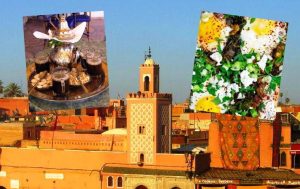Every year, the Sanctuary of Our Lady of the Conception of Muxima welcomes around two million pilgrims from all over Angola and beyond. They arrive seeking spiritual nourishment, with deep faith in God and confidence in the intercession of Mama Muxima, the patron saint of the Sanctuary.
About 130 kilometres separate Luanda from the sanctuary of Muxima via the modern bridge 17 de Setembro (17th of September), which crosses the river Kuanza and facilitates the journey from the capital to the sanctuary.
The sanctuary is located on the banks of the majestic Kuanza River, after which the Angolan currency is named. On top of a hill is an old military fortress, and at its foot is the small church that houses the image of Mama Muxima. Both buildings were built by the Portuguese in 1599 and have been declared national monuments due to their great historical value.
Even on a normal weekday, the church is filled with people, mostly women, who attend the midday Eucharist. The regular programme of the shrine includes three Eucharists from Monday to Friday and several more on Saturdays and Sundays. In addition, the Rosary of Light is prayed every Saturday evening, and on the third Friday of each month, there is a Vigil, where participants spend the whole night in prayer. Special programmes are prepared for pilgrimages.
Father Agustin Kahanda is the vice-rector of the shrine. When asked about the importance of the shrine, he mentions with healthy pride that it is “the largest shrine in the whole of southern Africa, the one that receives the largest number of pilgrims, as well as many tourists. Every week, pilgrimages of families, groups and members of Christian movements arrive from different Angolan dioceses. Every year, about two million pilgrims visit the Shrine, and during the great pilgrimage last August alone, we welcomed almost one million people”.
Father Bienvenu Pika, a Congolese missionary of the Dehonian Congregation who has been working in Angola since 2018, took part in one of the great national pilgrimages and was moved by the beauty of the candlelight procession in the evening: “Beautiful, beautiful. The image of Mama Muxima arrived by boat on the river and was welcomed by the visitors. There were hundreds of thousands of pilgrims, making it impossible to walk, so everyone stayed where they were with lighted candles in their hands. It was a luminous sign accompanied by songs that overwhelmed you.”
It is hard to believe that so many people can gather in one place at the same time. There is no large esplanade like in the Marian shrines of Lourdes or Fatima, nor are there any public services, hostels, lodges or suitable places for people to stay. Father Agustin acknowledged the lack of structures but assured us that “work is being done in collaboration with the government to open up spaces, some land is being rezoned, and soon there will be more improvements”.
For almost 300 years, this place was a meeting point for enslaved people who were taken from here to the coast to begin their journey without returning to the American continent. Father Agustin said that “the main reason why the Portuguese built the church next to the fort was to ‘baptise’ the slaves before they left”.
There are documents that record ancient pilgrimages to the shrine, but it was not until Angola gained independence in 1975 that they became commonplace. Gradually, Mama Muxima conquered the hearts of Angolans, and today the shrine is the country’s most important spiritual centre.
To accompany and assist the millions of pilgrims who visit the Shrine every year, a community of seven priests has been formed, belonging to the three dioceses that share the administration of the Shrine: The Archdiocese of Luanda and the dioceses of Viana and Caxito. There is also a retreat house owned by the Diocese of Viana and run by the Sisters of Our Lady of Muxima, an Angolan congregation founded in 1991.
On the large terrace of the shrine, with a beautiful view of the Kuanza River, we met Sister Luisa Matau Chaves. She said, “Many pilgrims come to the Shrine because they feel it is a welcoming place where they are listened to. They come with great faith to share their many problems and difficulties with Mama Muxima or to thank her for some situation that has improved their lives”.
The vast majority of those who go on pilgrimage to the shrine are women, and we ask why. Sister Luisa said, “Perhaps it is because in our Angolan reality, women are the ones who take care of the home and when there are difficulties, all the problems fall on them. Everyone suffers when the family is not functioning, but the woman suffers more; she is the main victim”.
Father Bienvenu pointed out that the Shrine is one of the places where the “pastoral of listening” is practised, an initiative of the Episcopal Conference which invites priests, but also some religious and authorised lay people, to welcome and listen to all people, Christians and others, who need consolation.
“Many people are unable to receive the sacrament of Penance, and this ministry allows us to approach their situation. The aim is to bless, to encourage and to help people on their way to conversion.
During the pilgrimages, from morning to evening, there are queues of people eager to go to confession or to be received in this pastoral care of listening. It is very demanding for those of us who dedicate ourselves to it,” concludes Father Bienvenu. (Enrique Bayo) – (Photo: Facebook)







